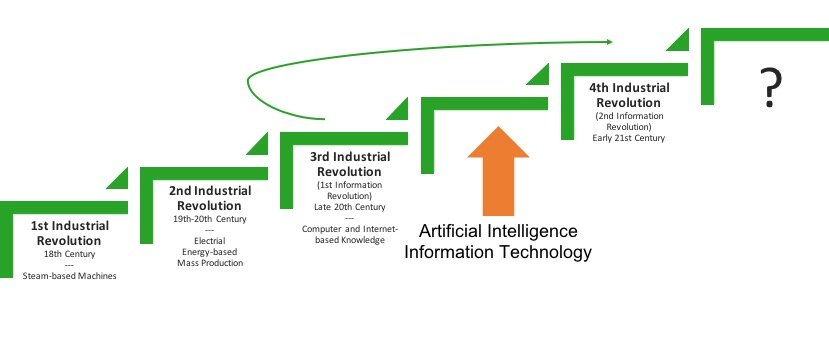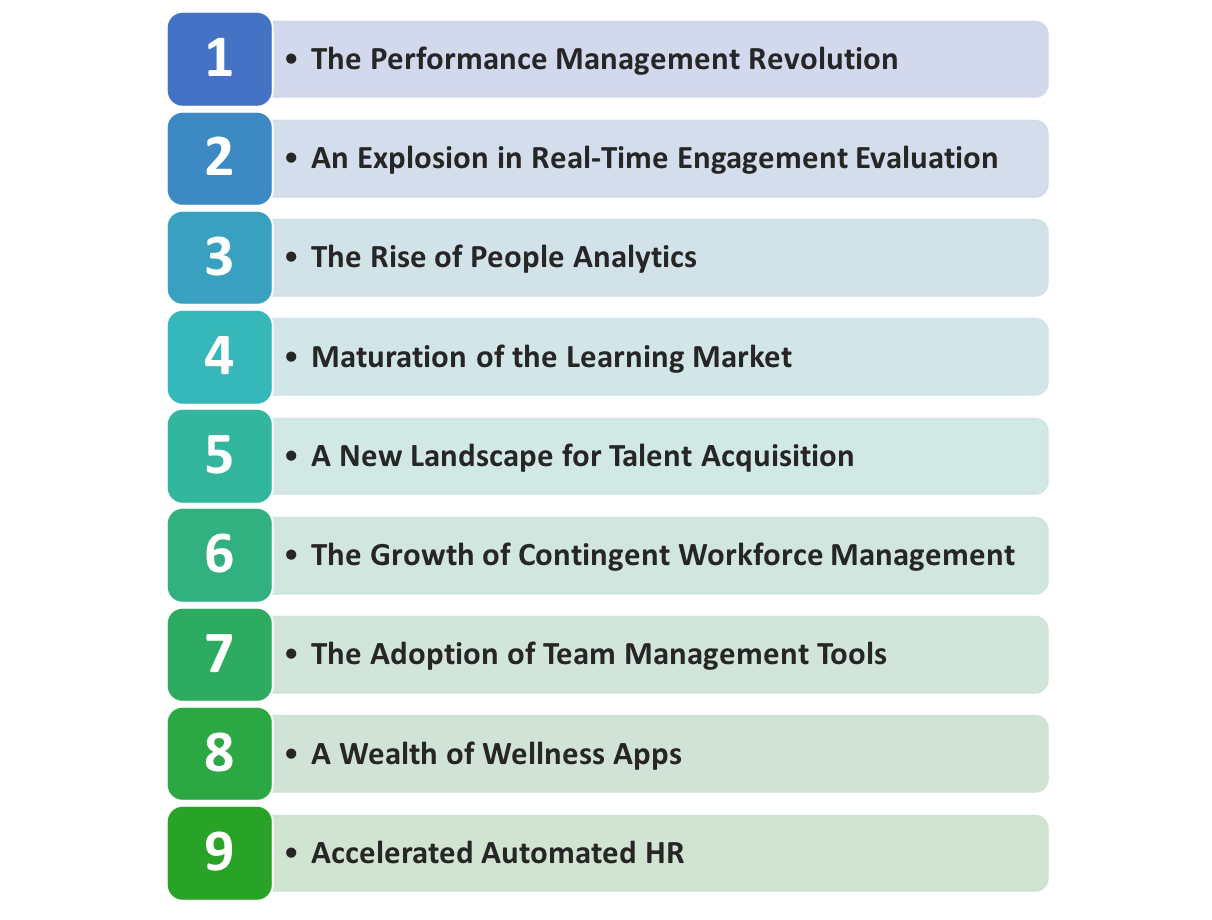Roboboss – to bot or not to bot? // Part 1
By Anders Skytte Martinsen, 22. October 2018
The Usain Bolt speed of technology being integrated in our everyday life is not to be neglected. This also goes for our work life. But how should we deal with, and, not least, how should leaders deal with it? Are we at a point where we are ready to talk about a roboboss?
For me, the answer to that question calls for blog that is broken into two parts. First, giving a needed historic view of technology, and an overview of what kind of software and technology is out there that can strengthen and support leaders in their actions. Second, a discussion of high tech AND/OR high touch, as well as management AND/OR leadership – a discussion that will also include an odd namedropping of Robert Downey Jr.
1, 2, 3, 4, 1, 2…
Searching for answers, I quickly realized the need for looking at where we have been, where we are now, and where we are going. Looking ahead of what might happen in the future is always a matter of guessing. Looking back, to some extent, might therefore seem easier. Nevertheless, this is a matter of which lenses you see with.
We are mostly bombarded with the alleged fact that we are now in the Fourth Industrial Revolution. And yes, I cannot deny that. However, if I take on the technological-optimistic lenses, I would follow a proclaim by e.g. Huawei, that we are also, and maybe more, in the second information revolution. Following this, we are now witnessing a flowing together of very different, and conflicting, emerging technologies, including a roboboss. A paradox, one might say. Or are we already so accustomed to these conflicts, that we do not even notice it?
![]() Paradox or not, we also see how the extra step on the revolution stairs have affected the description of the UN Sustainable Development Goals. Here we find, among others, the target in 8.2 describes: “Achieve higher levels of economic productivity through diversification, technological upgrading and innovation, including through a focus on high-value added and labour-intensive sectors”. A very vague definition given the speed of which we are climbing the revolution stairs. Nevertheless, it is there, it is mentioned, and let us be happy about that.
Paradox or not, we also see how the extra step on the revolution stairs have affected the description of the UN Sustainable Development Goals. Here we find, among others, the target in 8.2 describes: “Achieve higher levels of economic productivity through diversification, technological upgrading and innovation, including through a focus on high-value added and labour-intensive sectors”. A very vague definition given the speed of which we are climbing the revolution stairs. Nevertheless, it is there, it is mentioned, and let us be happy about that.
20/20 foresight
This description of the historic revolution gives a good overview to deal with the discussion of a roboboss. To give it a Shakespearian expression, it becomes a question of: ‘to bot, or not to bot?’. What do you believe in? With what lenses will you look at the future? One can try to have 20/20 foresight, but it will not be a perfect vision of the future, but instead filled with uncertainties that are beyond reasonable for a human to predict. And exactly therefore, it might be time to embrace the idea of a roboboss, so the vision of the future can be even more perfect.
I am not saying that roboboss would do better, but I am certain that it at some point will do at least as good as a leader, and hence free up time for other matters. So, the right discussion to have is probably how much one opens his or her arms up.
Can you smell the roboboss?
So, what can a roboboss do? Or maybe more precisely, what kind of software and technology are out there that can strengthen and support leaders in their actions? In a very rigid way I will try to divide it up in two categories: HR analytics and emotion sensing technologies.
The principal and founder of Bersin by Deloitte has on SHRM shared a really good overview of the most trending HR tech trends right now. Like so many areas, HR is in a state of volatility, and has gone from being operational-, over strategic- to now data-driven. As stated by SHRM, this is “…being driven by the shift from cloud to mobile; the explosion in analytics and artificial intelligence; and the emergence of video, social recruiting and wearables in the workplace. Everything is changing, and quickly—including the types of technology HR professionals use, the experiences those systems deliver and the underlying software designs—making many of the traditional HR systems purchased only a decade ago seem out of date.” As the chart shows, this includes everything from classic performance management, over people analytics to fully automated HR. Can you smell the robot now? Can you smell the roboboss?
 Emotion sensing technologies
Emotion sensing technologies
When it comes to emotion sensing technologies, one might say that this is also an area under Wellness Apps. Nevertheless, the thing is, that this just stands out so much that it needs to have its own category. In the 2018 spring issue of MITSloan Management Review emotion sensing technologies are described as being able to help employees make better decisions, improve concentration, and adopt healthier and more productive work styles. And yes, that is exactly what they can do.
Today we can measure stress by having employees using pressure-sensitive keyboard; asking day-traders to wear a bracelet in order not to get auction-fever; using webcam to measure your pulse; combining your mobile phone data, weather data and your dispositions of individual to detect stress. Other technologies can detect your boredom from mobile phone usage, and thereby enable boredom-triggered proactive recommender systems.
Lastly, we have companies that developed a system using employee badges to track who you talk to, how long you talk, and the tone of voice. These measures all require wearables. But be not disappointed. Researchers have also found a way of measuring our stress by using already-there-for-use Wi-Fi-signals, by seeing how the signals are projected back from our body. It does not smell of a roboboss – it stinks now! And these are just some of the many emotion sensing technologies. There are many, many more.
The paradox of ethics, morale, data…
But what about the ethics, the morale and the use of data? I am happy to see that the authors of the article in MITSloan are quick to say that companies must address important privacy issues when considering emotion sensing technologies. Even though a roboboss could be a good idea, it requires a good dialogue with all stakeholders. Of course, the matters of costs and complexity also need to be addressed, but the key part is the privacy related barriers. This obviously also goes for the use of different HR analytics.
Many people are skeptical about the use of their data – a skepticism that often relates to the question of who will get access to the data and what the data is used for. Here, you might speculate that concerns of privacy will not be a problem when the people being measured are the beneficiaries and when disclosure is voluntary. Nevertheless, the authors of the MITSloan article postulate three important things: 1) Be sensitive to employee concerns; 2) Develop data governance agreements; 3) Assure employees in written agreements that emotional data will be used only for specific business goals.
Make data agreements – that people read!
The paradox in this is that there is such a big need for the agreement on data in the workplace, when it at the same time does not seem to be a problem when we are in our homes and joining different SoMe-platforms. Everybody just clicks ‘yes’ when accepting the terms of service of e.g. Facebook. This also goes under the name: “The biggest lie on the internet”, and has several times being underlined in different studies, one being that 98% of people are willing to give up their first-born child to use a service. To quote the MITSloan article a last time, the paradox is that: “[s]ocial media itself has conditioned us to accept and even embrace new levels of personal transparency. The challenge will be to introduce new devices and measures into workplaces in a way that empowers performance, mitigates privacy concerns, and generally reassures employees that the benefits are mutual. “
This gives food for thought, and at the same gives me the option for giving you a break. I have much more to say in part two, and will continue around the policy and research within this field, high tech vs. high touch, and management vs. leadership.
Looking for a thought-provoking speaker
with knowledge of the future
and how to turn it into daily life?
Our newsletter is filled with articles and tools
for the modern
future-oriented leader








